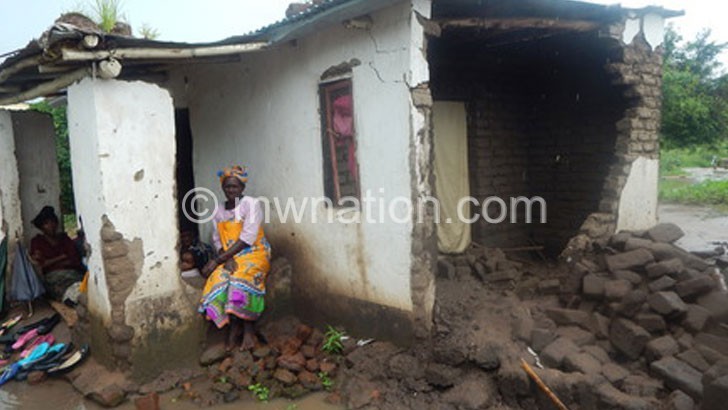Lessons from Cyclone Idai
In this article DOROTHY TEMBO-NHLEMA, from the Future Climate for Africa Programme, gives her personal perspectives on how Malawi can become more resilient to future extreme weather.
Malawians are still recovering from the aftermath of floods, a recovery that continues for many months to come.
The heavy rains in March came as a surprise as the seasonal forecast indicated that southern Malawi would get below-normal rains late in the season.

The rains from last October to early January were good and agriculture production estimates were promising. The FAO Global Information and Early Warning System projected nearly 3.4 metric tonnes of produce, over a quarter more than the previous season.
The positive outlook collapsed, when Tropical Storm Desmond reached the country in January. However, Storm Desmond’s impact paled into insignificance in comparison with heavy rains, strong winds and severe floods that hit the Southern Region from March 5-7.
Some isolated heavy and stormy rains continued later in March when Tropical Cyclone Idai passed over.
The effects of the flooding spread across 15 districts, especially the southern half of the country. This includes the Lower Shire, where the Future Climate for Africa project Umfula has been focusing its work on climate information needs and use.
By March 22, humanitarian situation reports confirmed that nearly 900 000 had been affected, with nearly 90 000 displaced, 59 dead and nearly 700 injured. Around 85 000 hectares of maize and other crops were destroyed.
Countless livestock, roads and buildings were destroyed by heavy rains, storms and floods.
Despite living in Lilongwe, away from the worst hit districts, I had my own encounter with the effects on 22 March.
On my way home, I was almost washed away by a flooding stream. With a struggle, I managed to drive through almost 30 metres of the stream that flooded after 90 minutes of heavy rains. It was not possible to reverse due to a queue of traffic building up behind me.
The Department of Climate Change and Meteorological Services invested a lot of effort in warning Malawians of the impending cyclone and its implications on the country’s weather conditions, but the population affected was more than expected.
Even the emergency relief and response to the affected areas was not as effective and efficient as it could have been.
I saw a post on the social media, during the first two days of flooding, Chikwawa had only one boat-belonging to Malawi Red Cross Society-for search and rescue.
What went wrong?
I am now left pondering what went wrong. We all know that Malawi is vulnerable to extreme weather events, especially floods and droughts. The most devastating floods occurred recently, in January 2015.
There is an active contingency planning process every year that assesses the likely extent of potential food insecurity and makes plans for humanitarian response.
The country also has improved the availability of weather information and early warning systems. Future climate change is likely to bring increased temperatures, changing rainfall conditions and altered patterns of extreme events.
So, we need to learn from this year’s experience to reduce future disaster risks and to plan for climate resilience.
Lessons
We need to continue to develop coordination mechanisms within government to ensure that warnings issued by the weather department are well communicated and acted upon by different parties.
We must also ensure that the Department of Disaster Management Affairs has budgeted support for disaster risk reduction, as opposed to relying on contingency planning and the availability of donor support after extreme events.
Most importantly, we need a longer-term perspective.
Named after a Zulu term for river, the Umfula is a four-year research initiative to improve climate information for decision-making in Tanzania and Malawi.
The team is generating new insights and more reliable information about climate processes in central and southern Africa, including the impacts of extreme weather events on water, energy and agriculture.
The aim is to support long-term-five to 40 years-planning decisions around resource use, infrastructure investment and cross-sectoral growth priorities.
As part of Umfula’s efforts, we have facilitated processes to look at the trade-offs likely to be based on future water availability in the Lower Shire basin.
We have received promising feedback from government partners on these processes.
Extending such processes across other sectors will be essential to avoid the type of devastation we have witnessed in 2019 and will contribute to a more resilient Malawi.





